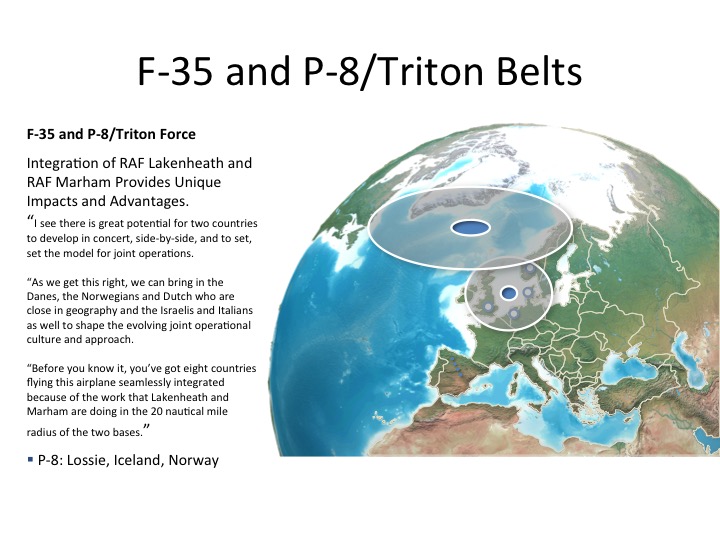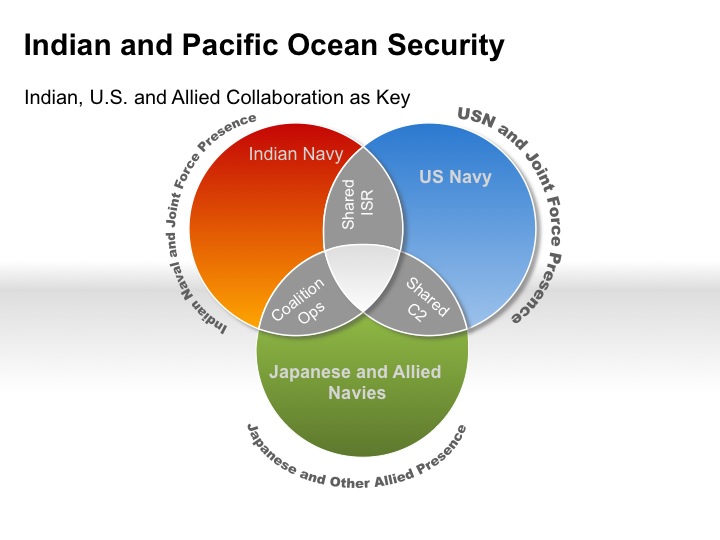2017-07-19 The next seminar to be held by the Williams Foundation in Canberra will focus on electronic warfare.
The seminar will be held on August 23, 2017 at the National Gallery of Australia in Canberra and Second Line of Defense will be covering the seminar and producing a report as well.
Background
An increasingly sophisticated and rapidly evolving threat with ready access to advanced, commercially available off-the-shelf technology is transforming the operational context in which the Australia Defence Force must now survive and fight. The next generation battlespace will be contested across multiple domains with control of the Electromagnetic Spectrum becoming just as important as control of the Air if the Joint Force is to operate with the freedom of manoeuvre necessary to ensure campaign success.
E/A-18 Growler Opportunity
Traditionally, Electronic Warfare has been the preserve of a specialist cadre of domain experts with an emphasis in recent years upon platform self-protection; however, that is all changing. The EA-18G Growler is the catalyst for a transformational change in our approach to Electronic Warfare and an opportunity to rethink our attitude to the Electromagnetic Spectrum as a warfighting domain in its own right. We will always need Electronic Warfare specialists, but we will increasingly need a much broader pool of Electronic Warfare generalists able to operate across the Joint Force if we are to maximise the capability of our new weapon systems.
Aim of the Seminar
This Seminar seeks to build a common understanding of how the EA-18G Growler, in particular, will impact the Australian Defence Force at the strategic, operational and tactical levels, and how Airborne Electronic Attack is likely to shape future Australian Defence and Security policy.
It will provide a historical perspective on the development of the Royal Australian Air Force’s Electronic Warfare capability dating back to World War 2, and describe how today’s Air Force personnel are raising, training and sustaining the Growler Force in partnership with the United States Navy.
We will hear the perspectives of the Australian Army, Navy, and the Joint Commanders, as well as contributions from our senior coalition partners in the United States and the United Kingdom. The emphasis will be on gaining a better understanding of the key enablers and technologies, such as C4I, Electronic Warfare Battle Management, and training systems, which turn the manned and unmanned platforms into Joint Capability delivering sophisticated battlespace effects.
The Seminar will also serve as an opportunity to provide an industry perspective on Electronic Warfare and, in particular, the role they can play as a Fundamental Input to Capability. It will highlight the importance of disruptive technologies, speed to market, and the increasing emphasis on non-kinetic effects to gain operational advantage. Industry participants are invited to address topics including Electronic Warfare Battle Management, training, and the emerging technologies associated with networked, force level effects.
Above all, the seminar will emphasise the need for a new attitude to Electronic Warfare and, in particular, a need to embrace the arrival of the EA-18G Growler as a catalyst for change. In doing so, it provides an opportunity to make Electronic Warfare more accessible and understandable to the Joint Force, and develop the Information Age Warfighters necessary to deliver campaign success on future operations.
http://www.williamsfoundation.org.au/event-2527349
A recent piece written by Stew Magnuson and published on the NDIA website highlighted the need to refocus on electronic warfare and the challenges facing the US in this regard.
After what one senior official called “25 years of inattention,” the Defense Department is pushing ahead to make its defensive and offensive electronic warfare capabilities more robust.
“There is an appreciation on the dependency of our electronic warfare capabilities [and] to make sure that the force — all the platforms — are survivable. I think that appreciation is very real and very substantial,” William Conley, deputy director of electronic warfare in the office of the undersecretary of defense for acquisitions, technology and logistics, said during a recent Mitchell Institute speech.
“The foot is fully on the gas pedal” when it comes to catching up on EW capabilities, he said.
Electronic warfare is among the fields that the Pentagon has identified as part of the “third offset” — a collection of battlefield technologies that the U.S. military must master in order to leap ahead of potential adversaries.
In the wake of a Defense Science Board report on the military’s electronic warfare shortcomings, Deputy Secretary of Defense Robert O. Work created an electronic warfare executive committee comprising high-level military leaders who meet once per month with the goal of reversing the “inattention.”
The July 2015 report, “21st Century Operations in a Complex Electromagnetic Environment,” concluded that the United States military was “no longer the overwhelming leader in these technologies.” The neglect set in after the end of the Cold War and with the perception that advanced threats had all but disappeared, it said.
“Superiority in electronics is now severely challenged and a substantial set of initiatives is needed to regain the advantage,” the report said.
The committee includes the undersecretary of defense for acquisitions, technology and logistics, the vice chairman of the Joint Chiefs of Staff, the services’ acquisition executives, Strategic and Cyber Command commanders, the directors of Operational Test and Evaluation and the Defense Advanced Research Projects Agency, and others.
Conley is the point man in the Defense Department’s campaign to make electronic warfare more robust.
“We — in my opinion — basically got to where we are in electronic warfare after 25 years of inattention. We will get out of it with 25 years of attention,” Conley said.
His office released in the spring a strategy document that looks at the current state of electronic warfare and where it is going. While Defense Department personnel and contractors can access the report, it is not releasable to the public, he said.
An implementation plan is in the works that will give specifics on where programs are going. That will be classified on a secret level because it will include exact technical specifications of next-generation capabilities, he said.
The challenging part of writing the plan will be avoiding prescriptive documents that say something must be done in an exact way. That stifles innovation, he said.
However, if the plan isn’t prescriptive at all there is a risk that the military will go down the same path and suffer another 25 years of inattention, he said.
“It is a delicate dance — in full disclosure — to make sure we get this right,” he said. The implementation plan needs to set goals that will bring the department to the “next level.” In about six months, he will begin sharing more specifics in classified settings, he said.
It is a complicated field and the threats and technology are rapidly evolving, he noted. In modern battlefields, data and communications will be traveling over the airwaves unless someone wants to carry fiber-optic cable around. Adversaries will try to intercept or jam communications or sensors such as radars. In turn, U.S. forces want to do the same to the enemy.
“Underneath our feet, the ecosystem is continuing to change,” Conley said…..
Conley gave an example of a potential problem in high-end warfare. A trendline shows that a surface-to-air missile that can reach 600 kilometers might be possible by the 2030s. The electro-magnetic spectrum will be needed to guide that missile to its intended target.
“You can’t just lob something 600 kilometers and expect to hit it. You’re going to have to guide it,” he said. It might require a midcourse update of the target’s presumed location. That requires protecting the electromagnetic spectrum. Only after reaching the vicinity can the missile turn on its seeking device, he said.
The anti-access/area-denial warfare the Air Force, Navy, and increasingly the Army, see themselves fighting against near-peer adversaries will also take place in the electromagnetic spectrum, he said.
Nations project power by setting up “no-go zones,” and they are extending these engagement areas year by year, he added.
“Everything about forming an A2/AD environment is about being able to access the spectrum,” he said.
As the Army develops its multi-domain battle concept, Conley noted that its plans will depend on the ability to network data and share it over these domains. “It is going to be going in some way, shape or form over a wireless link,” he said. “How are we contesting it? How are we protecting it? How are we accessing it?”
China’s military doctrine calls for information dominance in any battle, he said. That includes space, counter-space, cyberspace and electronic warfare.
“If they say they want to dominate something and we say we want to dominate something it is highly unlikely that both of us simultaneously can achieve dominance,” he said. The best that can be achieved in such a contested environment is “superiority,” he added.
If an adversary understands how an opponent thinks, it can start sending bad data, or prevent information reaching where it needs to go, he said.
Singer said it is hard to know how close potential adversaries such as China and Russia are to the U.S military when it comes to electronic warfare.
“You won’t be able to say who is better until after the fight, but they clearly see it as an area to offset our own advantages,” he said in an interview. They are making major investments in the technology, he added.
“Two can play the ‘offset’ game.
“And don’t just think of this problem set the way we do — by framing it as an air services issue for the Navy and Air Force to hash out. Russia showed off some interesting capability on the ground warfare side in Ukraine,” he said.
Another major issue, Conley noted, is fighting in joint operations and with allies.
“Not every fight is a high-end fight, … not everything is a [counter-terrorism] fight, but we have to be able to span across the range of military operations and across the different phases of a conflict to make sure we have the right capabilities at the right time,” he said.
The U.S. military needs cognitive systems, he said. It needs them to be more agile, capable of doing different things and adaptive so they can respond to changes in their environment faster.
If allies don’t have the same systems, or don’t know about U.S. capabilities, some electronic warfare weapons may have to be switched off, or risk being mistaken as an attacking adversary.
There has been a lot of “need to know” and secrecy between allies, he said.
“The more we can break down that belief, the better off we will be,” Conley added.
“We want to be able to be better integrated with the overall joint force, [and] with our allies,” he said.
Training, therefore becomes essential. The Air Force’s Red Flag exercise in the Nevada desert where allies fly together is a step in the right direction, he said.
“How do we train in a contested environment regularly enough?” he asked.
The materiel side is another matter.
“What are those systems of the future that we want to go ahead and do?” Conley said…..



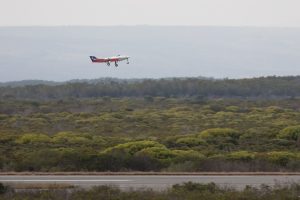
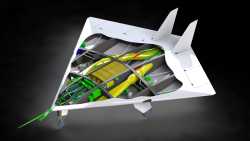
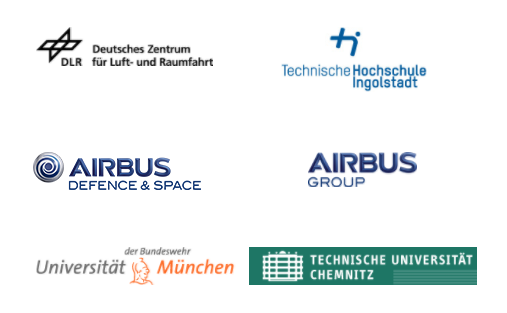

 The Afloat Forward Staging Base (Interim) USS Ponce (ASB(I) 15) conducts an operational demonstration of the Office of Naval Research (ONR)-sponsored Laser Weapon System (LaWS) while deployed to the Arabian Gulf. (U.S. Navy photo by John F. Williams/Released)
The Afloat Forward Staging Base (Interim) USS Ponce (ASB(I) 15) conducts an operational demonstration of the Office of Naval Research (ONR)-sponsored Laser Weapon System (LaWS) while deployed to the Arabian Gulf. (U.S. Navy photo by John F. Williams/Released)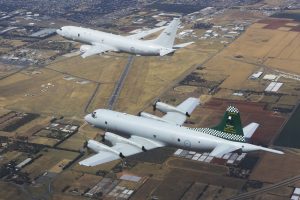 The Royal Australian Air Forces first P-8A Poseidon, A47-001 flys in formation with a current AP-3C Orion over their home Base of RAAF Base Edinburgh in South Australia.Credit: Australian Department of Defence
The Royal Australian Air Forces first P-8A Poseidon, A47-001 flys in formation with a current AP-3C Orion over their home Base of RAAF Base Edinburgh in South Australia.Credit: Australian Department of Defence The P-8 and Triton integrated facility being built at RAAF Edinbourgh, near Adelaide in South Australia. Credit: Australian Ministry of Defence
The P-8 and Triton integrated facility being built at RAAF Edinbourgh, near Adelaide in South Australia. Credit: Australian Ministry of Defence